Excavations at Walberton: The Horse Skeletons
27 September 2019
ASE Archaeologists have recently completed an excavation in Walberton, West Sussex. Amongst the fascinating archaeology of the site they found two horse ‘burials’, likely post-medieval in date. This is the story of the excavation of the skeletons.
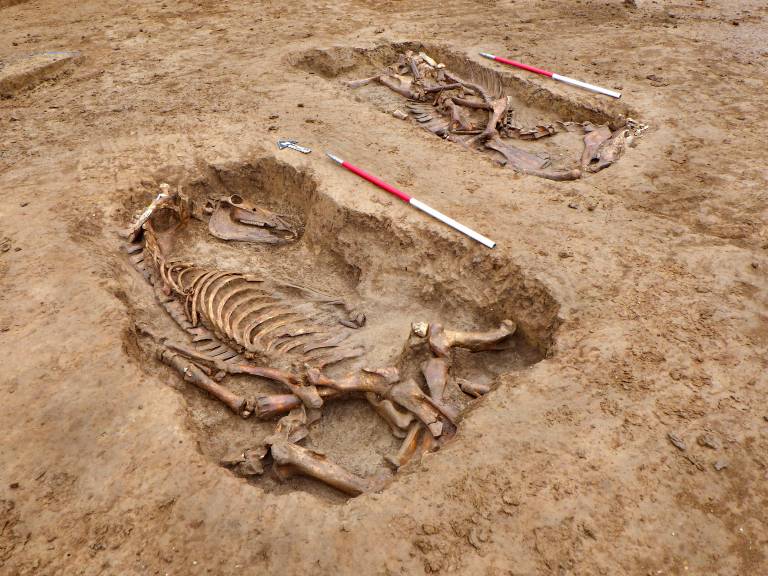
When the archaeologists realised they had uncovered some animal burials, they called in our zooarchaeology team to help identify the species. They confirmed that both possible animal skeletons were horse from the shape of the foot bones. The anatomy of the ankles and feet of horses differs a lot from other possible large species as horses only walk on one toe (hoof), whereas cloven-hooved cattle and deer walk on two.
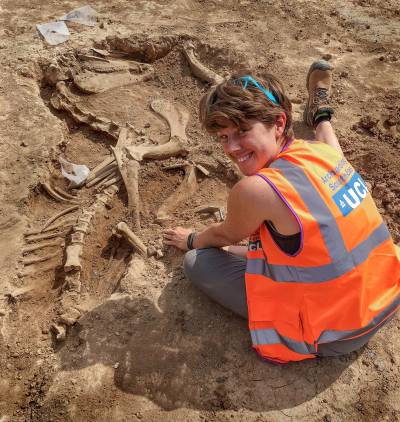
The excavation begins on the first horse burial.
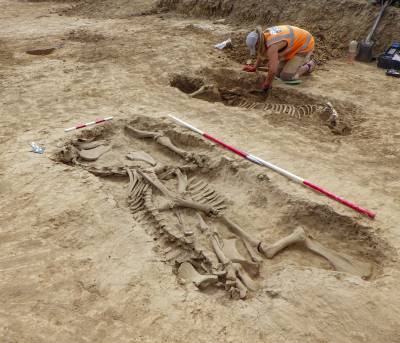
Romeo fully excavated in the foreground, with Juliet still being excavated in the background.
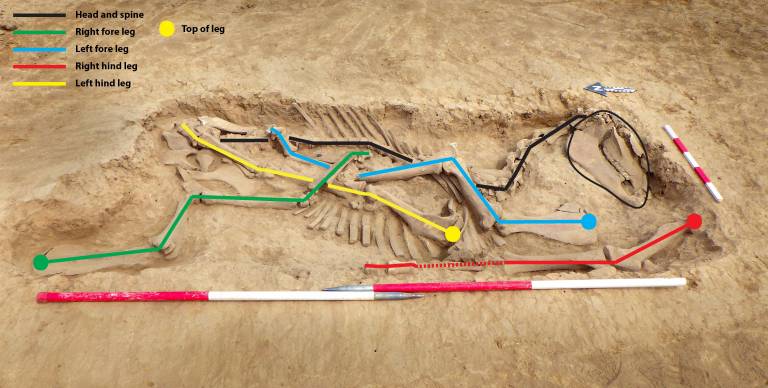
Romeo, fully excavated and with lines representing the arrangement of the limbs. The dashed red line indicates where a metatarsal bone was taken previously for comparison to the reference collection.
Juliet fared even worse – her head and legs had all been removed and placed in the pit separately. Her head was by her tail and her legs were all piled where her head should have been.
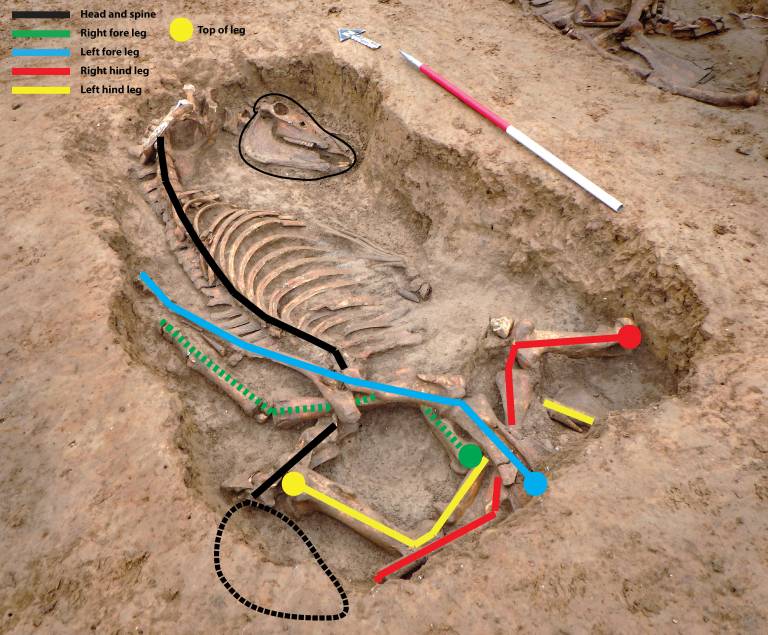
Juliet. The right forelimb (dashed green line) has no scapula and may be under the other legs. The dashed black line shows where the head should be.
On both animals the bones of each leg were still attached to each other, so the burial of these horses must have happened soon after the animals died. As bodies decay the soft-tissue connections between bones rot away, so if these animals were moved some time after death their individual legs and torsos wouldn’t be so in-tact.

Romeo (background, with his head to the right) and Juliet (foreground), fully exposed.
Our working theory for these animals is that they were farm animals that either died through natural causes, disease, or had reached the end of their working lives and were killed to save resources. It is probable that the pits that were dug to bury them were too small, especially Romeo’s as his skeleton is very close to the edge of the pit, so they had to start cutting off body parts to make them fit. A bit of a grisly image to be sure.
Now the horse skeletons have been carefully excavated and brought back to the lab we can begin post-excavation work – first washing and bagging, and then full zooarchaeological analysis on each skeleton. From the little of Juliet that has been washed we’re already seeing really interesting spinal pathologies, so we might be able to eventually tell a little more about the lives and deaths of these two horses.
 Close
Close

